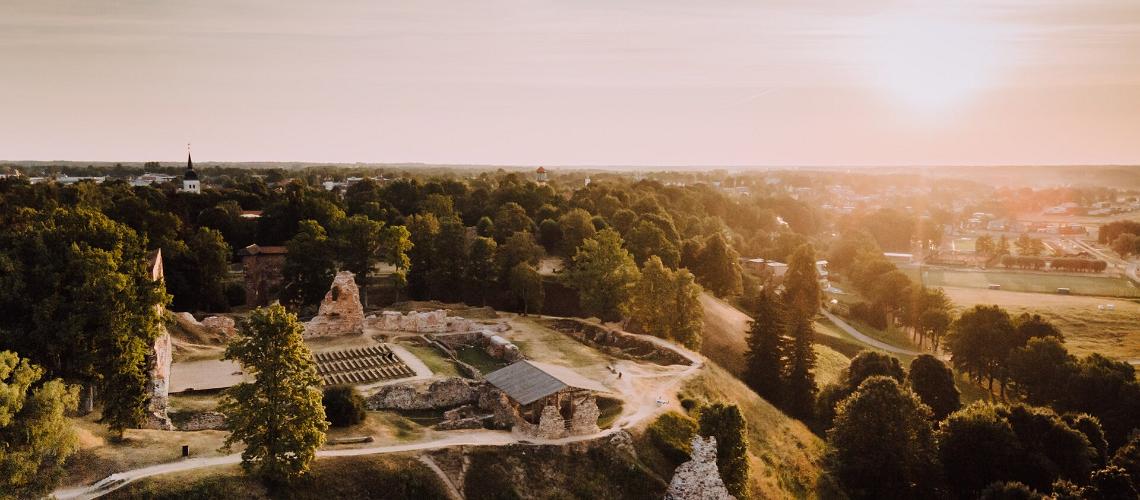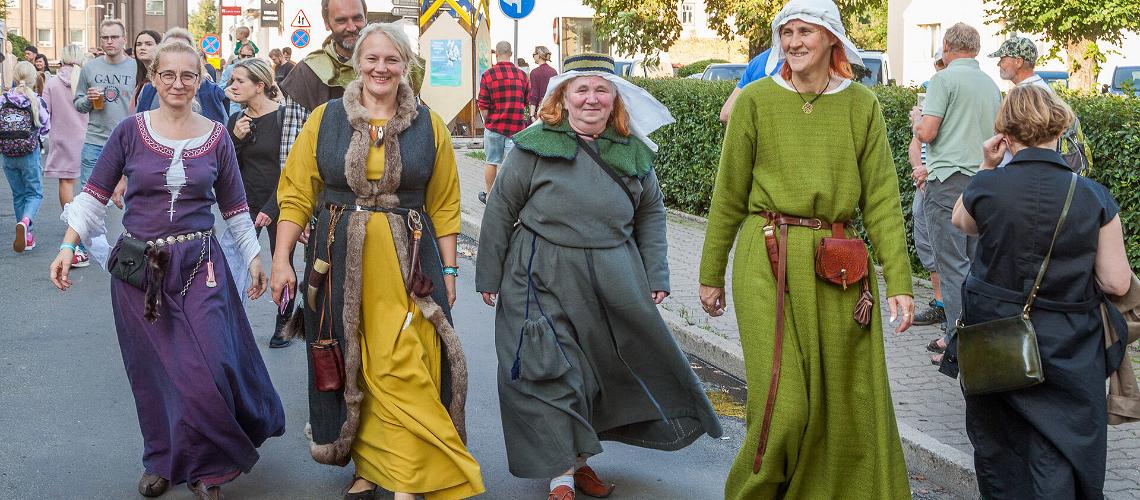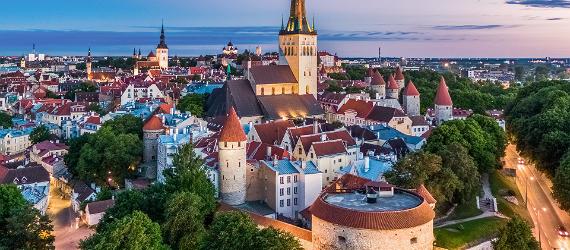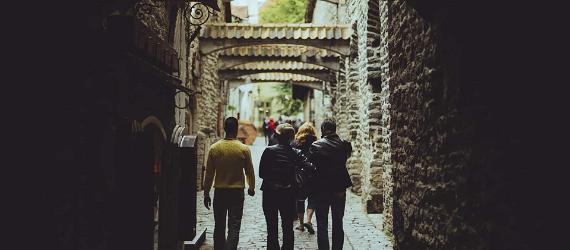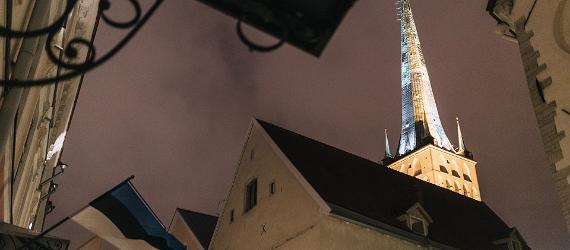The Hanseatic League shaped the economies and politics in the North Sea and Baltic Sea for over 400 years. This made Estonia a sought-after territory and a battleground for neighbouring kingdoms. Visitors today can still explore the legacy of this medieval trading route in Tallinn, Tartu, Viljandi, and Pärnu.
What was the Hanseatic League?
During medieval times, there were three social classes: noble, priest, and peasant. The noble class taxed the peasants, which included merchants and craftsmen. Individually, they would not have been able to stand up to the noblemen, but together they had a chance to push back against excessive taxation. Merchants and craftsmen banded together and formed guilds — essentially a medieval trade union.
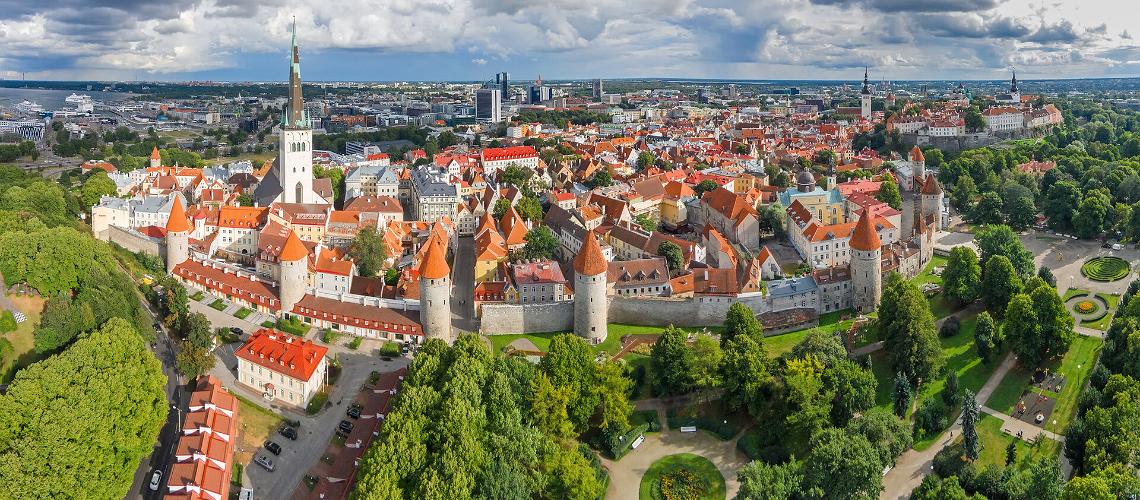
The red-tiled roofs of Tallinn's Old Town
This part of town is filled with medieval gems.
Photo by: Kaupo KaldaThese guilds, also called hansa, started to come together in the latter half of the 12th century. Beginning with the north German towns of Lübeck and Hamburg, the league gradually grew in size and influence until it was officially founded in 1356. By agreeing to work together for mutual benefit and to aid one another with personal armies for defense, the traders of the cities of the Hanseatic League were able to wield enormous economic power. More and more cities joined, and eventually, the Hanseatic League held a near-monopoly on all trade in the North and Baltic Seas between the 13th and 15th centuries.
The Hanseatic League spread from the Netherlands in the west to Russia in the east, and from Estonia in the north to Krakow, Poland, in the south. Timber, furs, honey, flax, fish, and resin traveled from east to west, and cloth and manufactured goods went in the opposite direction.
Hanseatic Estonia
Four towns in Estonia were once part of the Hanseatic League: Tallinn, Tartu, Pärnu, and Viljandi. Of the four, Tallinn's Old Town has the most well-preserved medieval architecture, and it's where you should start if you wish to learn more about the Hanseatic League's influence in Estonia.
Tallinn
Great Guild Hall
This medieval building was completed in 1410. It houses a branch of the Estonian History Museum where you can learn about the Great Guild and the history of trade in Estonia.
Town Hall and Town Hall Square
The Town Hall is one of Tallinn's most iconic medieval buildings. It is the oldest city hall in northern Europe. The Town Hall Square is home to various events throughout the year, including Tallinn's famous Christmas Market. You can also visit Raeapteek on the other side of the square. First mentioned in 1422, it is the longest continually operated pharmacy in Europe.
Kiek in de Kök Fortifications Museum
Learn about the military history of Tallinn back when it was known as Reval. The medieval tower offers panoramic views of the city, and you can also visit underground Bastion passages.
Maritime Museum in Fat Margaret's Tower
This fascinating museum is located in Fat Margaret's Tower next to the Great Coastal Gate, one of the two surviving gates to medieval Old Town. Renovated in 2019, the highlight of the museum's exhibition is a 14th-century cog. This medieval sailing ship would have been used for trade between Hanseatic League cities.
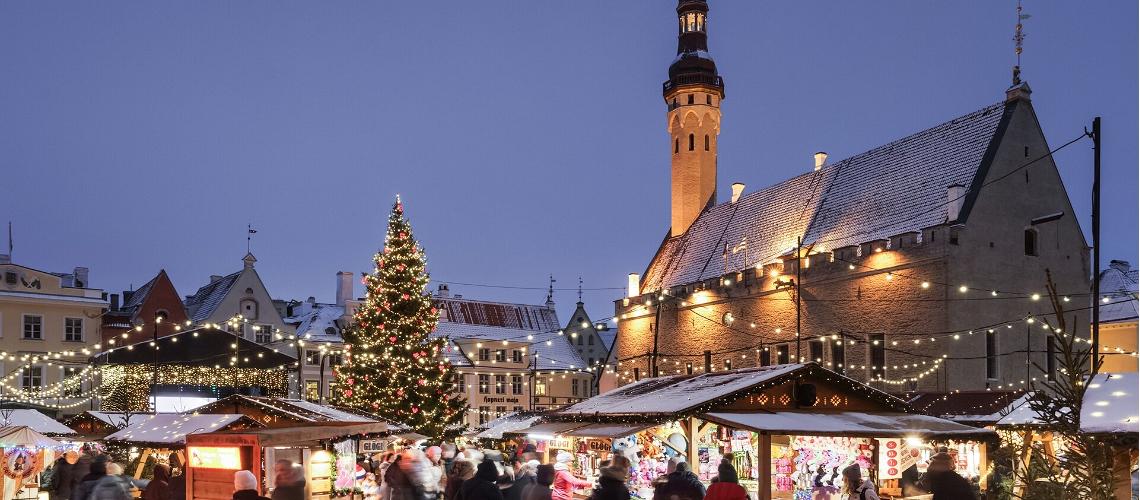
Tallinn's Town Hall and Town Hall Square
Christmas is an enchanting time to visit medieval Tallinn.
Photo by: Sergei ZjuganovTartu
Toome Hill
This hill lies at the heart of medieval Tartu. The Bishop's Castle was built there in 1234 but was damaged during the Livonian War in the late 1500s and finally destroyed after the Great Northern War in the early 1700s. Nowadays, the hill is a public park, and nothing remains of the castle.
St. John's Church
This church was mentioned for the first time in 1323. The facade is decorated with over 2,000 terracotta figures from the 14th century. The originals are in nearby museums while exact replicas adorn the church today. Like the Bishop's Castle, it was damaged during the Great Northern War in the early 1700s. It was rebuilt, but a fire caused by fighting between Russian and German forces in 1944 again destroyed much of the building.
Tartu Cathedral and University Museum
Tartu Cathedral is the only medieval church with two spires in Estonia. Construction began in the 13th century and was finished in the 16th century. However, it was destroyed during the Livonian War and has not functioned as a church since then. The University of Tartu Museum is located there, and visitors can go up the spires for a view of the city.
Jõmmu barge
This wooden vessel was built as a replica of the sailing ships that would have navigated Estonian waterways during the Hanseatic era. Jõmmu sails on River Emajõgi, Lake Peipsi, and Lake Võrtsjärv from the start of April to the end of November.
Estonian National Museum
For those interested in history, the Estonian National Museum is a must. It covers the history of Estonia from the Stone Age to modern times. Besides the fascinating permanent exhibition, there are rotating temporary exhibits on a wide range of topics.
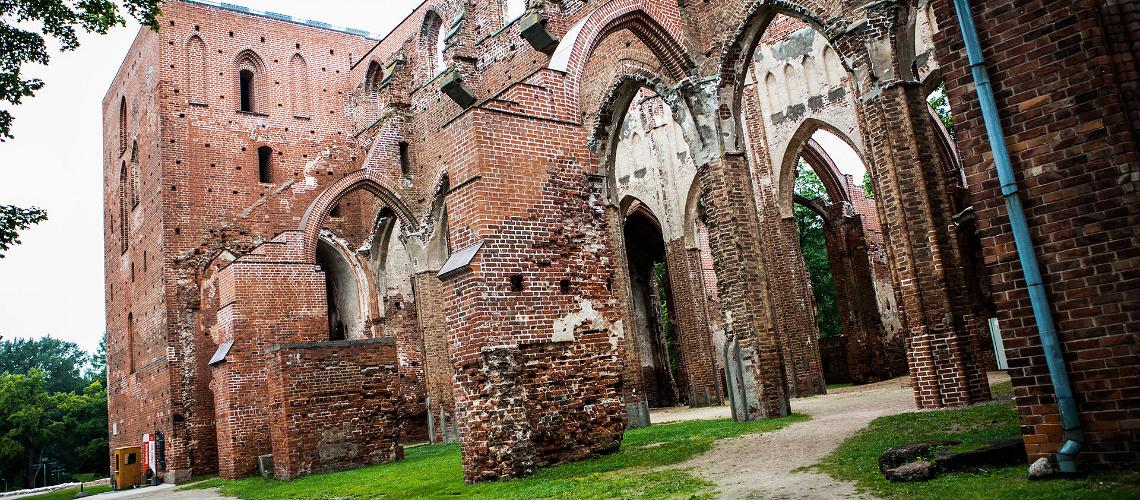
Tartu Cathedral ruins
Climb the spires for a panoramic view of the city.
Photo by: Mariann Liimal/Visit EstoniaViljandi
Viljandi Castle ruins
While only ruins remain of what used to be home to the Livonian Order, you can still imagine the castle in full glory as it overlooks nearby valleys. Nowadays the ruins and the surrounding park are often used for outdoor events.
City wall remains
From the beginning of the 14th century, Viljandi was surrounded by walls four meters high and two meters thick. Some remnants of the walls remain in their original locations.
St. John's Church
This church was built in the 1600s on the ruins of a Franciscan abbey. It became a warehouse after the Second World War and is currently used as a concert hall.
Pärnu
This small town located at the mouth of the River Pärnu is best known as a summer holiday destination, though it used to be an important trading town on the Hanseatic route. Unfortunately, a number of fires destroyed most of the medieval city over the years. The Red Tower, a prison tower dating back to the 15th century, still remains. It currently houses a panoramic cinema and exhibition on the medieval history of Pärnu.
Hanseatic Days Celebrations
Every summer, these cities remember their Hanseatic heritage by turning into a medieval fairground for a few days. Vendors sell food and handicrafts, and there's a full program of music and dance.
2023 Festival Dates
- Tallinn Medieval Days, July 6th-9th
- Hanseatic Days in Tartu, July 8th & 9th
- Hanseatic Days in Viljandi, June 3rd & 4th
- Pärnu Hanseatic Days, June 30th-July 2nd















